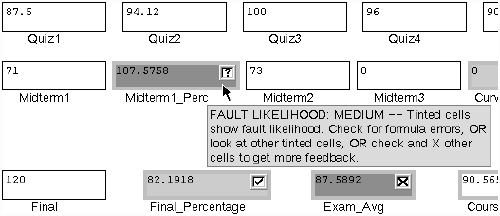Authors
Joseph Ruthruff, Margaret Burnett, & Gregg Rothermel
Abstract
End users develop more software than any other group of programmers, using software authoring devices such as e-mail filtering editors, by-demonstration macro builders, and spreadsheet environments. Despite this, there has been only a little research on finding ways to help these programmers with the dependability of the software they create.
We have been working to address this problem in several ways, one of which includes supporting end-user debugging activities through fault localization techniques. Our preliminary studies have shown that some fault localization techniques can provide end users with effective feedback; however, these studies provide no guidance into the factors that impact technique effectiveness.
This paper presents the results of an empirical study that examines the impact of two orthogonal factors on the effectiveness of fault localization techniques. Our results have implications for fault localization for end users, and highlight the importance of separately evaluating each factor in a fault localization technique.
Sample

The user notices an incorrect value - the value is obviously too high - and places an X-mark in the cell's decision box.
All cells that could have dynamically contributed to this incorrect value have been highlighted in shades of gray, with darker shades corresponding to increased fault likelihood.
This example uses the Nearest Consumers technique.
Publication
2004, Oregon State University, School of Electrical Engineering and Computer Science, Technical Report 04-60-08, June
Full article
The impact of two orthogonal factors in interactive fault localization
